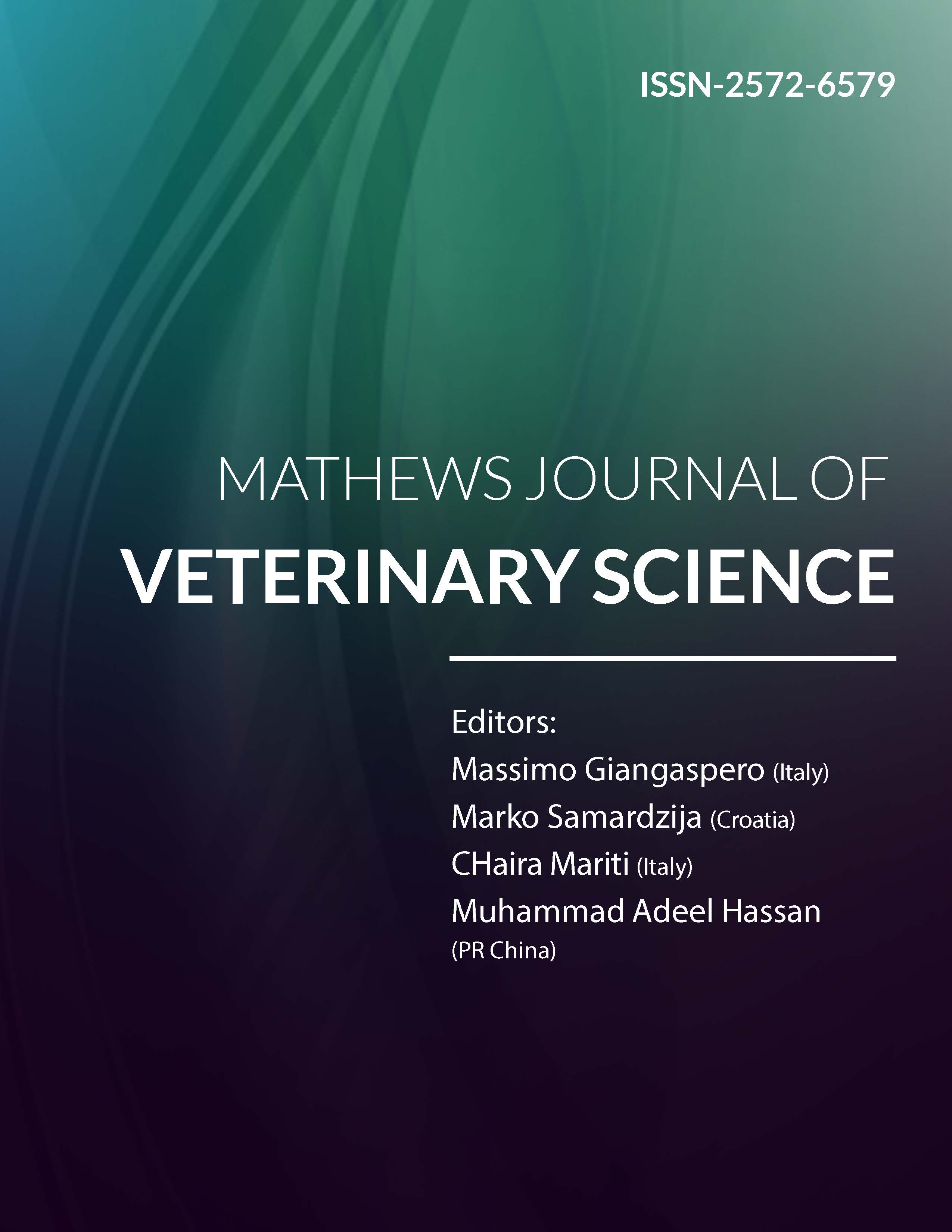
Information Links
Previous Issues Volume 7, Issue 6 - 2023
Evaluation of bacterial load and Multi-drug Antibacterial resistant Salmonella and Clostridium isolates from contaminated tools used in butcheries around Ibadan
Fasanmi OG1,*, Adekunle OF1, Okuneye OJ1, Akanbi IO1, Adegor EC2, Agbato OA1, Lamidi BK1, Emikpe OO1, Owolabi OT3, Olusegun OB3, Oyedepo MO1
1Federal College of Animal Health & Production Technology, Moor Plantation, Ibadan, Nigeria
2Department of Public Health, National Open University of Nigeria, Nigeria
3Department of Animal Health & Production Technology, Rufus Giwa Polytechnic, Owo, Nigeria
*Corresponding author: Fasanmi OG, Federal College of Animal Health & Production Technology, Moor Plantation, Ibadan, Nigeria; Email: [email protected]
Received Date: December 08, 2023
Publication Date: December 19, 2023
Citation: Fasanmi OG, et al. (2023). Evaluation of bacterial load and Multi-drug Antibacterial resistant Salmonella and Clostridium isolates from contaminated tools used in butcheries around Ibadan. Mathews J Vet Sci. 7(6) :33.
Copyright: Fasanmi OG, et al. © (2023)
ABSTRACT
This study was designed to evaluate the bacterial load and antibiotics resistance prevalence of Salmonella and Clostridium isolates from tools in butcheries around Ibadan. The samples were aseptically collected from the tools and subjected to microbiological analysis. The food-borne bacteria isolated include Salmonella, Escherichia coli, Clostridium and Campylobacter spp, but only Salmonella and Clostridium spp were subjected to antibacterial sensitivity testing. The total bacterial count was highest (7.020±0.160 x 105/cfu/m) in the table scrapings at sampled butcheries, while the least (4.550±0.200 x 105/cfu/m) was recorded from the axe.
This study showed high antibiotics resistance prevalence, especially with the Salmonella sp; Chloramphenicol (57%), Enrofloxacin (57%), Trimethoprim (53%) and Oxytetracycline (51%). On the other hand, the Clostridium isolates were resistant to the antibiotics at varying percentages, but with highest resistance prevalence of 49% for gentamycin. Comparatively, the Salmonella isolates are more resistant to the common antibiotics than the Clostridium isolates. Multi-drug resistance has been demonstrated against common antibiotics such as enrofloxacin, oxytetracycline, gentamycin, amoxicillin and chloramphenicol, the resistance has also spread to the Fluoroquinolones (Ciprofloxacin) which are drugs of last resort.
Consequently, we recommend that butchers are trained on general hygiene, and also, antibiotic prescription and dispensing are handled by qualified personnel.
Keywords: Antibacterial resistance, Antibiotics, Butchery, Food borne bacteria, Ibadan